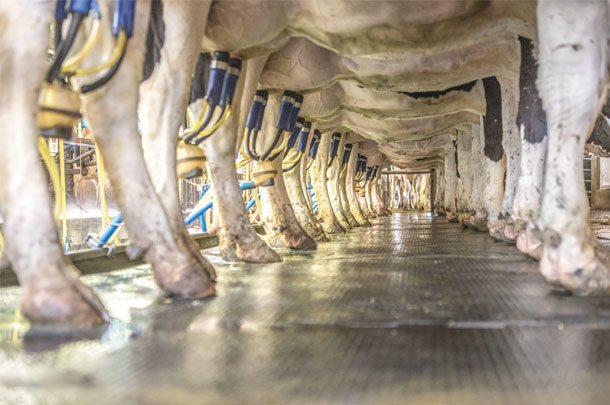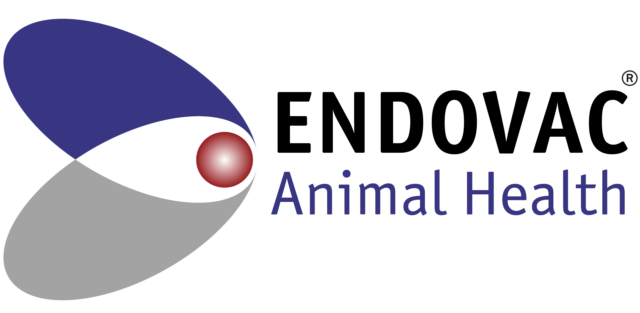In fact, according to the Dairy Farmers of Canada, the right to produce in kilograms of fat rose from 122 million in July 2015 to 128 million in December 2017.
This additional quota is saving producers as long as they can actually produce those extra percentages. Therefore, in order to take advantage of these opportunities, Canadian dairy farmers may choose one of two options:
- Optimize existing potential in buildings, available surfaces, labour and the herd to maximize current margins.
- Increase livestock numbers and expand infrastructure, potentially with a change from tiestall barns to freestalls with milking parlours or robots, in order to increase production volumes and fill larger quotas.
The first option is crucial and should be completed before attacking the second. However, in both cases, the search for maximum profitability remains the same.
The producer is subject to the laws of the market for the price of his or her inputs; therefore, they must focus on the economic elements over which they have control.
Genetics is one of those components that can greatly influence the profitability of dairy businesses. Thus, among the many strategic decisions an agricultural manager must make, the strategy of renewal and genetic management of his or her herd is a key factor that can significantly change profitability.
In any dairy herd, there is this cow that breaks the rule, being from a middle or lower sire for production but has excellent production performance. Having said that, these extremes remain exceptions.
On average, and in any herd, the top 25 percent of cows in production will generally have the best genetic potential in fat, protein and milk. This is observed throughout Canada, regardless of the breeding conditions.
For example, the 1,074 cows in Quebec that exceeded the 400 points of breed class average fat (BCA Fat) in 2017 have an average genetic potential of 40 kilograms of fat, while the 50,496 cows with a fat BCA between 100 and 200 have an average genetic potential of 4 kilograms of fat.
To prioritize the characteristics of economic importance and rapid achievement of results, two genetic selection criteria appear crucial:
-
Kilograms of fat: The production quota and the Canadian dairy producer’s paycheque are based on the quantity of fat delivered. Maximizing the kilograms of fat produced per unit of production, labour or stalls available accelerates the amortization of fixed costs. Selecting bulls with three figures for kilograms of fat allows dairy producers to project objectives of 2 kilograms of fat per cow per day.
- Daughter Fertility: When the potential for fat production is secure, Daughter Fertility ensures cows keep up this production level from one year to another. Contrary to popular belief, the main reason for culling is not type-related; it has to do with reproductive issues. According to CanWest DHI and Valacta data, reproductive problems accounted for almost one in five cows to leave the herd between 2011 and 2016. The arrival of genomics has led to an increased accuracy in the assessment of this trait, and faster genetic gains can now be expected.
For all practical purposes, the combination of fat and Daughter Fertility is intended to increase the daily production of fat and lactation durability after lactation.
Nothing is more frustrating than having invested for 20 to 24 months on a replacement female who will take almost a lactation to repay its upbringing and eventually be culled because of infertility. Each producer is sensitive to the return on investment, and good fertility prolongs this depreciation in the medium term.
According to Brian Van Doormaal, in an article published by Canadian Dairy Network in May 2017, adding minimum values beyond the LPI and Pro$ indices limits the speed at which overall objectives are achieved.
For example, a +12 for type filter removes 27 of the 28 bulls in the breed that combine more than 100 kilograms of fat and 110 for Daughter Fertility at a time. However, these eliminated bulls have in most cases the necessary qualities in terms of production and health to achieve profitability goals quickly.
The model of a first lactation that must classify Very Good is not necessarily the one to integrate to maximize lifetime profitability. A complete, balanced, no-flawed first lactation with excellent production potential that does not cause health problems during lactation can help achieve maximum fat production per day.
Since significant genetic gains have been made in recent years for type-related longevity, the genetic strategy for generating a profitable cow model needs to focus on production, health and fertility traits.
In this sense, Pro$ is the genetic index best suited to act as a genetic barometer for profitability. Farms that adopt freestall management must still pay special attention to genetic traits important for locomotion and automated milking.
This model joins the objective of the “ideal cow” that must improve its feed conversion, increase its production of milk and solids, increase the components of milk, concentrate the presence of the desired proteins (beta casein A2, kappa casein B) and, finally, be a cow without health problems.
One of the best methods to achieve these goals is to identify the variation of Pro$ between active females within the same herd.
A genomic test precisely identifies the best females. The use of sexed semen on the latter generates the genetic and economic gains recorded in an aggressive genetic strategy.
Finally, genetic selection is a strategic lever to respond to the dairy opportunities offered by the Canadian market.
Production systems are evolving along with the cow model that can be developed from genotyping, sexed semen, and feed conversion technologies.
A selection based on the Pro$ combined with kilograms of fat and Daughter Fertility guarantees a serenity on the part of the manager in reaching the goal of 2 kilograms of fat per cow per day. ![]()
References omitted but are available upon request. Click here to email an editor.
PHOTO: A genetic strategy emphasizing the combination of Pro$, kilograms of fat and fertility can create cows positioned to take advantage of Canadian dairy market opportunities. Photo courtesy of STgenetics Canada.

-
Julien Thomin
- Director of Sales Canada
- TAG-Sexing Technologies ULC
- Email Julien Thomin










